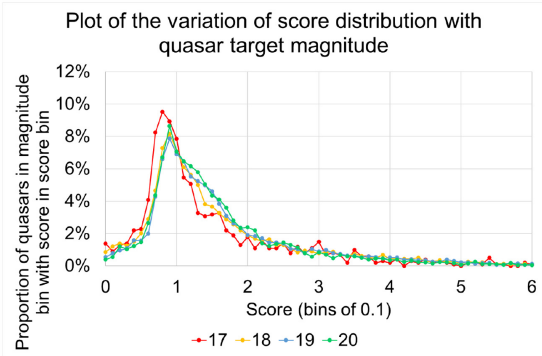
Using machine learning to predict the correlation of spectra using SDSS magnitudes as an improvement to the Locus Algorithm
Differential Photometry works best when the target and reference star have similar spectra. But in vast majority of cases, spectra won't be available. We look at machine learning techniques to see ways inwhich stellar magnitudes can be used as proxies to predict how well spectra wil correlate.

The Locus Algorithm: A novel technique for identifying optimised pointings for differential photometry
The publication detailing the workings of the Locus Algorithm, a technique to identify the best reference stars for a given target star and to calculate the corresponding telescope pointing to capture them all in the telescope field of view.

A catalogue of Locus Algorithm pointings for optimal differential photometry for 23 779 quasars
This publication details the results from running the Locus Algorithm on all the quasars identified by SDSS. It leads to the identification of quasars with a good surrounding of reference stars. In general, quasars are more difficult to observe with differential photometry because their specra are so different from stars, making it harder to account for the effects of the Earth's atmosphere.

Data Mining by Grid Computing in the Search for Extrasolar Planets
Oisin Creaner's Thesis. Using the SDSS catalogue to refine the process of Differential Photometry.